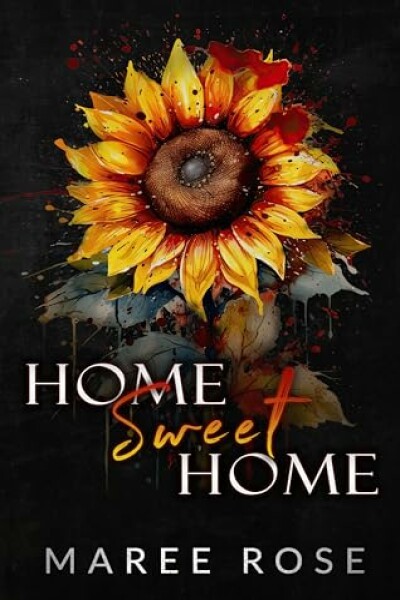Review: Home Sweet Home by Maree Rose
Category:
Rating:

Introduction:
When you’re a teenager, life is usually simple and carefree. You could never imagine the evil that lurks in the shadows, waiting for a chance to steal your innocence. However, for Willow, that evil becomes a stark reality when she’s abducted while walking home one night after spending the day with her best friends. For 15 long years, Willow finds herself in the clutches of a sinister cult, her life dictated by the whims of those who seek to control and manipulate her. At the same moment that she tries to break free, she is finally saved, her life spared from what she considered a fate worse than death. To reclaim the life she lost, she returns to her hometown, and the friends who never forgot her. But her life’s not instantly filled with sunflowers. A lot has happened during the time she was gone, and people have changed, including her. Willow’s time in captivity has left scars on both her body and soul. She wants to heal and move forward with her life. But will her past stay in her past? Has evil followed her home? Or was it there all along?
Review:
Reviewed by Dakota Watson
Maree Rose’s Home Sweet Home delves into profound darkness, primarily revolving around Willow, the story’s central figure. Beginning with her liberation from a cult compound after fifteen years in captivity, the narrative follows Willow’s endeavor to acclimate to ordinary existence, aided by therapy, companionship, and community support. The book presents a blend of highs and lows, evoking both admiration and scrutiny from readers, as it navigates through various emotional landscapes.
One thing I really would have loved to learn more was her life at the cult compound. While the focus was mainly on the physical and sexual abuse she suffered from her fiancé during her captivity, I was curious to know the inner workings and structure of the cult in detail. It would have been enlightening to delve deeper into its organization and dynamics to get a better understanding of how they operated.
It was heartening to witness the solidarity of her small town, rallying around her to support her transition back to regular life. Their collective efforts to ensure her well-being were truly touching. On the other hand, Loretta and Heidi served as stark reminders of the unnecessary cruelty that can be inflicted upon someone who is already deeply wounded and struggling to heal from unimaginable trauma.
However, I’m uncertain if introducing four male characters as love interests to Willow was the best choice on the author’s part. While I understand the author’s intention to illustrate Willow’s journey towards embracing her sexuality and breaking free from the constraints of purity culture, I wonder if this approach was the most effective way to convey that message. The backstory of the four love interests lacked the depth I was hoping for. Given that Willow was abducted by the cult at the age of twelve, it’s hard to believe that Mason, Gage, and Wyatt all developed deep romantic feelings for her as teenagers and considered her their soulmate. It’s questionable whether a fifteen year old boy would even think about soulmates, let alone three of them in the same circle. Additionally, Easton’s love for Willow, solely based on her kidnapping story and her influence on his career choice in law enforcement, felt somewhat contrived.
I found the extensive therapy sessions depicted in the book to be particularly compelling. They offered a detailed insight into the depth of Willow’s trauma and the transformative power of therapy in navigating the complexities of her recovery journey. These sessions effectively showcased how therapy can serve as a vital tool in overcoming mental obstacles and achieving healing.
Apart from Willow, the character development of the other characters felt lacking, with many of them appearing two dimensional. The presence of four love interests likely contributed to this issue, as it spread the focus thin across multiple characters. Consequently, there wasn’t sufficient time for the author to delve deeply into each of their arcs. Kat stood out as a compelling female character, and it would have been enriching to see Willow engage more with female friends her own age, rather than solely revolving around romantic entanglements with various men.
The plot twist at the end, aside from the obvious one, was particularly compelling to me due to its dark and unsettling nature. It felt chillingly plausible, underscoring the capacity for some individuals to commit heinous acts without any apparent motive. This added a layer of realism to the narrative, highlighting the disturbing depths of human behavior.
Home Sweet Home had the potential to be a remarkable book with a few alterations. While Willow’s story was captivating, I can’t deny feeling frustrated and unsatisfied with certain aspects of the narrative.
Book Cover:


